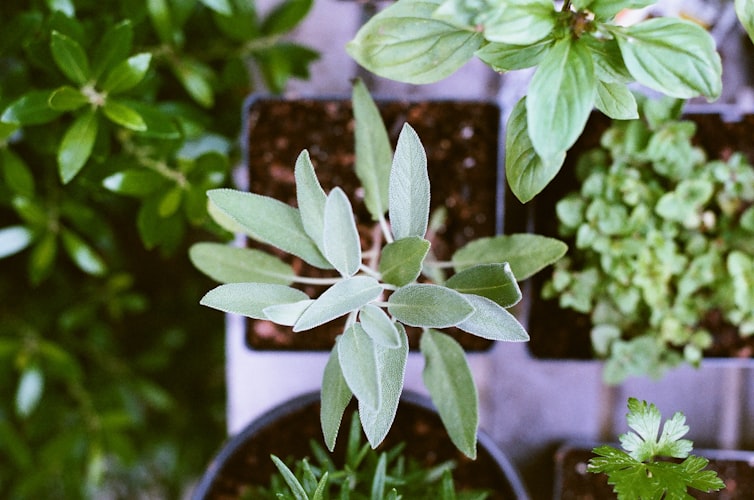
Do you enjoy a splash of lush greenery around your living space? Does the sight of vibrant plants have an instant calming effect on your mind? Wouldn’t it be great if you could relish fresh herbs and veggies for your breakfast sandwich every morning?
Is your answer to any of the above questions a thunderous “yes”? Well, then chances are you’ve contemplated creating your own kitchen garden. But if you’re living in an urban city apartment, limitations on the available space must have crushed your dreams.
Table of Contents
Gardening in City Apartments
Of course, everyone aspires to have an awesome-looking garden in their backyard where they can grow the most exotic fruits, vegetables, and herbs. But the lack of space in your apartment shouldn’t dissuade you from building the kitchen garden of your dreams.
Container gardening has made it possible to grow a full-fledged abode of green even in the tiniest apartments. You just have to know the right way to start a thriving indoor garden irrespective of the available space. Also, you need to find the right container gardening tools and accessories, and learn to care for your plants.
In this blog, we’ve compiled a handy guide to help you kickstart your journey of amping up your kitchen gardening skills. Let’s take a look.
Top Apartment Gardening Tips
First things first – starting a kitchen garden is more than just getting fancy pots and planting a few seeds. From finding the right plants based on your location and weather to nurturing the soil with organic fertilizers – building your kitchen garden requires hard work and perseverance. Of course, the luscious fruits and veggies you get to devour in the end make it worth the effort.
Here are a few tips to create the kitchen garden of your dreams in any apartment:
1. Choose the Right Spot
Here’s the thing – plants need an abundant supply of sunlight to grow. So, before starting your kitchen garden, the first thing you should do is find a spot in your apartment that receives ample sunlight throughout the day. And it doesn’t necessarily have to be in the kitchen.
If your apartment has a balcony or terrace, it could be the ideal location for the garden. But you need to observe how sunlight changes during the day on the balcony/terrace. Also, building your garden in an open space would make it more vulnerable to inclement weather, as well as pests and insects.
Alternatively, if your apartment has a bay window that receives ample sunlight, you could build your garden here. If space is a concern, find a wall that gets direct sunlight and create a vertical garden. The location of your garden will determine the type of plants you can grow, as well as the type of pots you should use.
2. Select Your Pots & Planters
When you’re starting an indoor garden, you should ensure that your apartment can support the weight of various pots. Also, keep in mind that the pots will become heavier once you add soil and the plants begin to grow.
Consult your landlord or neighbors to know more about specific building codes regarding indoor gardening. It’s particularly crucial if you’re planning to start your garden on the terrace or balcony.
The good news is that you can choose from a wide array of dainty planters made of wood, ceramic, terra cotta, or metal. You can also use hanging or wall-mounted planters for a vertical garden. You could even create DIY planters using plastic bottles, paint cans, old tires, etc.
3. Get Your Soil
Unlike traditional gardens, you can’t use regular soil to grow plants in container gardens. Instead, it’s wiser to get a potting mix that contains the right blend of soil and fertilizers. It’s light and airy and doesn’t become dense, unlike normal soil.
You can further enrich the soil with different types of fertilizers. Buy organic fertilizer from your neighborhood nursery, or order it online. You could even make your own compost using vegetable peels and scraps. It’s a great way to minimize waste while nurturing your plants.
4. Start Planting
Now that you have your containers ready with soil and fertilizer, it’s time to plant your seeds. Ideally, you should choose seeds of those plants that readily grow in your area. Also, you could switch to different plants based on the season. Herbs are a safe bet because they tend to grow throughout the year and need lesser maintenance.
5. Learn to Care for Your Plants
If you’re a beginner, you’re going to have plenty of questions about the right way to look after your plants. Join a few gardening-related Facebook groups to learn tips and tricks from other experienced gardeners. Also, you could read various books and blogs on indoor gardening.
That’s it! Now all you have to do is wait for your plants to grow and reward you with the freshest fruits, veggies, and herbs. Use the aforementioned guide to build your garden from scratch, even if you live in a tiny apartment.

